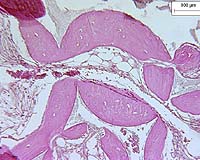 |
Lausanne, Switzerland (SPX) Feb 24, 2011 It's a discordant note in the symphony of good news that usually accompanies stem cell research announcements. Stem cells hold enormous promise in regenerative medicine, thanks to their ability to regenerate diseased or damaged tissues. They have made it possible to markedly improve the effectiveness of many medical treatments - muscle regeneration in cases of dystrophy, skin grafts for treating burn victims, and the treatment of leukemia via bone marrow transplants. The problem is obtaining them. Those that are the true source of life, in the first days of embryonic development, are of course the most highly sought after; still undifferentiated, they are "pluripotent," meaning they can evolve into liver, muscle, eye - any kind of cell. But the issue of how to obtain them clearly raises insurmountable ethical questions. "In this regard, the recent discovery of the "reprogramming" phenomenon, by which somatic cells can be induced to convert to a pluripotent state simply by forcing the expression of a few genes, opens a phenomenal number of possibilities in regenerative medicine," says Didier Trono, Dean of the EPFL School of Life Sciences. "Imagine, for example, collecting a few cells from the hair follicle of a hemophiliac patient, reprogramming them to the pluripotentiality of their embryonic precursor, correcting the mutation responsible for the coagulation disorder that plagues the patient, and then re-administering them, genetically "cured," after having orchestrated a differentiation into fully functional progeny."
Increased risks for cancer? Even more serious, the genetic mutations observed resemble mutations that are found in cancer cells. The scientists draw the conclusion that reprogrammed stem cells need to be extensively investigated before they can even be considered for use in regenerative medicine. The experiments were done using mouse mammary and fibroblast cells. The researchers used three different processes for reprogramming the cells to a "stem," or embryonic, state. The first method was developed expressly for this study, and the others have already been well documented. Yet all the processes led to the same, implacable conclusion: the genetic anomalies multiplied, in a manner that seems to indicate that they are inherent to the reprogramming process itself, which typically makes use of oncogenes. "Interestingly, oncogenes have the potential to induce genomic instability," the authors explain. These results underline the necessity of conducting further studies. First, to see if the genetic anomalies are serious enough to compromise the function and stability of cells regenerated using the reprogrammed cells; and second, to "refine the methods used for generating induced pluripotent cells, in order to avoid this problem. These results will thus motivate scientists to come up with a solution," concludes Trono.
Share This Article With Planet Earth
Related Links Ecole Polytechnique Federale de Lausanne The Clone Age - Cloning, Stem Cells, Space Medicine
 Stem Cell Discovery Could Lead To Improved Bone Marrow Transplants
Stem Cell Discovery Could Lead To Improved Bone Marrow TransplantsSanta Cruz CA (SPX) Jan 11, 2011 Researchers at the University of California, Santa Cruz, have identified a key molecule for establishing blood stem cells in their niche within the bone marrow. The findings, reported in the January issue of Cell Stem Cell, may lead to improvements in the safety and efficiency of bone marrow transplants. Bone marrow transplants are a type of stem cell therapy used to treat cancers such as ... read more |
|
| The content herein, unless otherwise known to be public domain, are Copyright 1995-2010 - SpaceDaily. AFP and UPI Wire Stories are copyright Agence France-Presse and United Press International. ESA Portal Reports are copyright European Space Agency. All NASA sourced material is public domain. Additional copyrights may apply in whole or part to other bona fide parties. Advertising does not imply endorsement,agreement or approval of any opinions, statements or information provided by SpaceDaily on any Web page published or hosted by SpaceDaily. Privacy Statement |